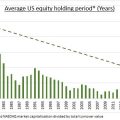by Calculated Risk on 8/12/2024 08:12:00 AM
Altos reports that active single-family inventory was up 1.3{3da602ca2e5ba97d747a870ebcce8c95d74f6ad8c291505a4dfd45401c18df38} week-over-week. Inventory is now up 40.2{3da602ca2e5ba97d747a870ebcce8c95d74f6ad8c291505a4dfd45401c18df38} from the February seasonal bottom.
Click on graph for larger image.
This inventory graph is courtesy of Altos Research.
As of August 9th, inventory was at 693 thousand (7-day average), compared to 684 thousand the prior week.
This is the highest level of inventory since June 2020; however, inventory is still well below pre-pandemic levels.
The second graph shows the seasonal pattern for active single-family inventory since 2015.
The red line is for 2024. The black line is for 2019.
Inventory was up 40.5{3da602ca2e5ba97d747a870ebcce8c95d74f6ad8c291505a4dfd45401c18df38} compared to the same week in 2023 (last week it was up 39.9{3da602ca2e5ba97d747a870ebcce8c95d74f6ad8c291505a4dfd45401c18df38}), and down 27.5{3da602ca2e5ba97d747a870ebcce8c95d74f6ad8c291505a4dfd45401c18df38} compared to the same week in 2019 (last week it was down 28.9{3da602ca2e5ba97d747a870ebcce8c95d74f6ad8c291505a4dfd45401c18df38}).
Back in June 2023, inventory was down almost 54{3da602ca2e5ba97d747a870ebcce8c95d74f6ad8c291505a4dfd45401c18df38} compared to 2019, so the gap to more normal inventory levels is slowly closing.




